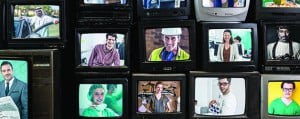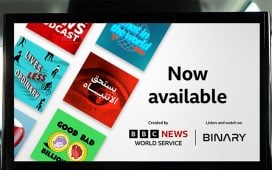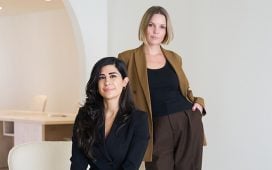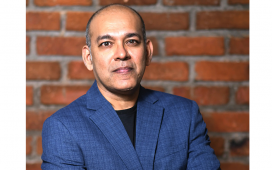
Once again the UAE’s advertisers are on the cusp of knowing who is watching what on television but the final hurdles could still threaten the age-old project, writes Austyn Allison
The UAE’s TView people-meter project is now being audited by Paris-based non-profit CESP. But this big announcement, made at the end of July, may have come too late to save the seemingly endless project from grinding to a halt amid funding issues and inter-agency politicking.
The people-meter system uses audio recognition and handsets to log the viewing habits of a 3,000-strong panel. It has been set up and trialled since 2011. The panel results are extrapolated to provide data on who is watching what and for how long. This allows advertisers to better measure the reach of their campaigns, and for broadcasters to hone their programming.
Roy Haddad, regional CEO of WPP, the holding group whose measurement agency Kantar Media supplies and operates the meters, said: “Obviously where media is a very important investment, also important is the data that supports the development of a media industry that has a high added value, creates a lot of jobs, and creates the revenues and means to sustain itself.”
He emphasised the importance of accurate data, saying: “We always misunderstood the use of media research, because we always use it as a selling tool rather than as an internal tool to improve the product itself. The moment we make that shift, a lot of things will change in this industry.”
The UAE’s television ratings have long been gleaned from computer-aided telephone interviews (CATI), conducting by local/French research firm Ipsos. People are telephoned and asked to recall what programmes they watched the day before.
Critics say the CATI system is outdated and flawed for a number of reasons: people my be untruthful or mistaken since it is based on memory and recall; channel-surfing can make it hard to track every channel and programme a viewer may have seen; and minute-by-minute analysis remains impossible. Viewers tend to better remember watching larger and better-known channels, to the detriment of smaller channels and programmes, and the data can take weeks to process, while people meter metrics are available the morning after.
People meters eliminate the wildcard of human memory and already provide detailed data in other advanced media markets around the world.
After three rounds of auditing, TView has returned figures accurate enough for CESP to endorse it.
The people meters are supplied and operated by Kantar Media, and the TView project has been funded by a coalition of agency bodies, the Emirates Media Measurement Company (EMMC), which was formed in 2011 after the National Media Council (NMC) contracted Kantar earlier in the same year. Its founding shareholders were Abu Dhabi Media Company, Sharjah Media, Rotana, Etisalat and twofour45. The NMC and telecom provider du supported the project without taking a stake.
However, some big names are notable by their absence from that list. At the July 27 announcement of the successful audit, WPP’s Haddad addressed this when he said the audit results should mean Choueiri Group will come on board. The group is an industry giant, controlling all media sales for pan-Arab broadcaster MBC. Haddad said he had spoken with the group’s CEO, Pierre Choueiri, the day before and Choueiri had reaffirmed that audited figures would bring his company into the project.
Other industry watchers are more circumspect, believing Choueiri will only join if there is also a joint industry committee (JIC) formed of media, advertisers and agencies.
Keld Nielsen, Kantar’s global chief client officer and managing director of the EMEA region, also believes Choueiri would welcome a JIC. “When we [Nielsen and Haddad] met Pierre [Choueiri] yesterday, he again repeated that [Choueiri Group] will join,” he says. “He was encouraging this JIC to take place. We actually agreed to meet again within a few weeks in order to push this.”
Choueiri Group had not replied to requests for comment before Campaign went to press.
Inter-industry bickering has kept people meter projects from coming to fruition for more than a decade. And despite the big step of the audit, agency relations can still be a stumbling block. Media agencies owned by holding companies such as France’s Publicis and the US’s Omnicom have been reluctant to pay, or encourage their clients to pay, for a service owned by WPP.
Even the founding stakeholders are losing faith. EMMC’s general manager Chris O’Hearn left the company in January, although he remained as a consultant until May. He has not been replaced. Another two of EMMC’s four permanent staff also resigned, and the last was laid off in June. As Campaign went to press, the TView project’s website had gone offline.
The contract between EMMC and Kantar runs until November and Kantar is putting on a brave face.
“The EMMC is still there,” says Nielsen. “We signed a contract originally with the NMC. That was converted into the EMMC in 2011. That contract runs until the end of November. So it’s still there.”
EMMC founding firms including Abu Dhabi Media and Etisalat are still on board, and “we expect them to come up with something,” Nielsen adds. “A new CEO, a contact extension, an RFP [request for proposals].”
And Kantar “will use all the resources we have” to make a JIC happen, says Nielsen.
A JIC would not be fundamentally different from the EMMC’s model, but a shift in emphasis might help new partners back the TView project without losing face for coming on board late.
However, it is not the only option; O’Hearn, who now heads up audience measurement consultancy 3M3A, says: “JICs are not the only way to run an audience measurement system. There are many locations where Kantar or [rival monitoring firm] Nielsen runs a commercial service direct to the market. The US is a prime example of that.”
Even in the UAE, Ipsos’s CATI system is provided by its vendor, not commissioned by a JIC.
However, as the situation stands, it looks like a JIC might be the only thing that could save people meters. It would replace the EMMC as the body steering the project, and might also persuade Choueiri Group to join.
But this would involve members of other holding groups to partner with a WPP company, and without a great deal of pressure from their clients, they are unlikely to want to do this.
That pressure isn’t there yet, even though the technology is. And once again the people meter project is at an impasse.
The Superpanel alternative
Ipsos is proposing its own alternative to Kantar’s people meters. It has been testing, and plans to roll out, what it is internally calling its “Superpanel” of about 1,000 families in the UAE whose consumption of online media, television and radio will be monitored.
To track digital consumption, the households will run modified routers alongside on-device metering techniques to track panellists’ online activity. Meanwhile, apps running on panel members’ smart phones will match the audio from television and radio within earshot of the phone, and compare it with data from a monitoring station in Sharjah.
Ipsos is funding the $2.5m project itself, in the hopes of then proving the attractiveness of its data to clients who might want to better understand consumers’ media consumption.
Ipsos says it has tested the systems, which monitor all websites viewed, apps used, videos watched and music streamed. It is currently waiting for security approvals from UAE government authorities, before it starts the potentially more difficult task of persuading consumers to agree to join the panel. It will do this by offering voucher incentives and entering panel members into prize draws.









